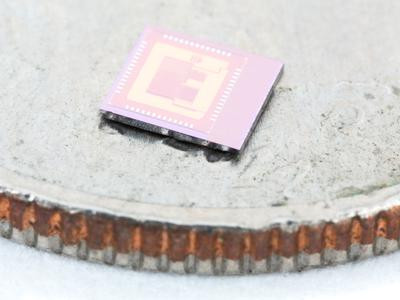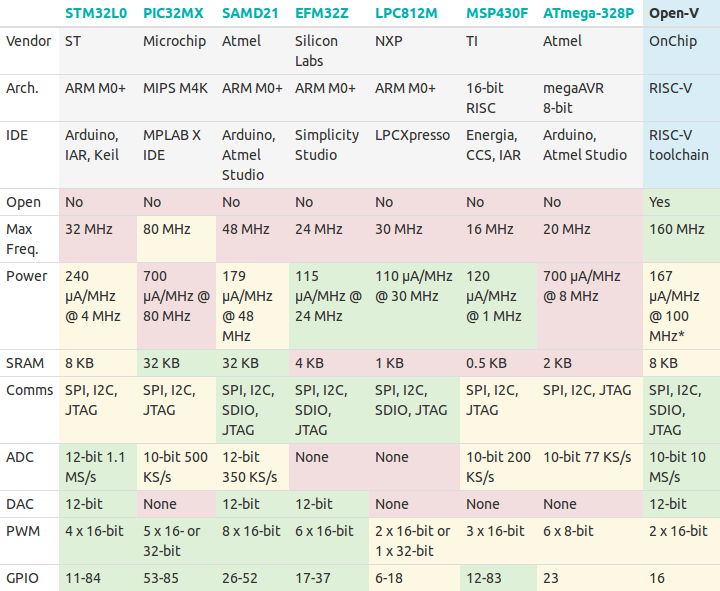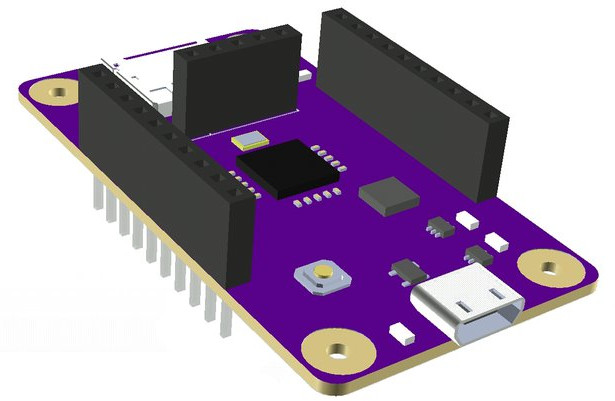Open source hardware gives mostly full control over software and hardware, but there are different levels of openess, with some companies wrongly claiming their product to be open source hardware – with a nice accompanying logo – once they dump some source code somewhere and publish the PDF schematics, while others are doing it right with the release of schematics and PCB layout in source format, as well as software and proper documentation. However even for the latter group, the actual chips are closed source bought directly from silicon vendors or their distributors. So the good news is that you now have the opportunity to bring the meaning of open source hardware to a whole new level thanks to OnChip Open-V 32-bit processor that is open source, and getting launched on Crowd Supply crowdfunding platform.
 OnChip Open-V is based on RISC-V (pronounced “risk-five”), comes with peripherals, and should be competitive against ARM Cortex M0 based micro-controllers. The MCU would also be the first RISC-V chip available on the market.
OnChip Open-V is based on RISC-V (pronounced “risk-five”), comes with peripherals, and should be competitive against ARM Cortex M0 based micro-controllers. The MCU would also be the first RISC-V chip available on the market.
Open-V chip specifications:
- Processor – RISC-V ISA version 2.1 @ up to 160 MHz
- Memory – 8 KB SRAM
- Clock – 32 KHz – 160 MHz; Two PLLs, user-tunable with muxers and frequency dividers
- Analog Signals
- 2x 10-bit ADC channels, each running at up to 10 MS/s
- 2x 12-bit DAC channels
- Timers
- 1x general-purpose 16-bit timer
- 1x 16-bit watch dog timer (WDT)
- General Purpose Input/Ouput
- 16x programmable GPIO pins
- 2x external interrupts
- Interfaces
- SDIO port for example to add a micro SD slot
- 2x SPI ports, I2C, UART
- Programming and Testing
- Built-in debug module for use with gdb and JTAG
- Programmable PRBS-31/15/7 generator and checker for interconnect testing
- 1.2 V operation
- Package – QFN-32

You can find the complete OnChip Open-V design, including the RTL (register-transfer level) files for the CPU and peripherals, as well as the development and testing tools in Github, all released under the MIT license. The source can be used to teach silicon designs, debug and correct errors in the chip without asking the vendor, and if you plan to roll your own cut reducing costs by cutting out licensing fees.

Now most people would not be able to do much with just the MCU only, so the company will also develop an Open-V development board with the following specifications:
- MCU – 32-pin QFN Open-V microcontroller
- Storage – 32 KB EEPROM, microSD receptacle
- USB – 1x USB 2.0 controller + micro USB port for power and data
- Expansion – Breadboard-compatible breakout header pins
- Debugging – JTAG connector
- Power – 1.2 V and 3.3 V voltage regulators
- Dimensions: 55 mm x 30 mm
The board will be programmed with the Arduino IDE, so it should be not harder than programming any Arduino boards, or any platforms using the popular IDE.
However, getting silicon to market is an expensive endeavor, and the only way to bring prices down to to manufacture millions of units. OnChip is starting small with a first target of 70,000 chips, which still converts to a $480,000 funding target. There are several ways to help reach that goal starting with a $49 “Chip Pioneer” reward to get on of the first chips to be manufactured, but the most popular reward is likely to be Open-V development board going for $99. Shipping is free to the US and $7 to the rest of the world. You’ll also have to patient, quite understandably due to the task at hand, as rewards are only expected to ship in April and May 2018, unless you pledge for one of the most expensive rewards giving access to early chips in May 2017.
Thanks to Nanik the tip.

Jean-Luc started CNX Software in 2010 as a part-time endeavor, before quitting his job as a software engineering manager, and starting to write daily news, and reviews full time later in 2011.
Support CNX Software! Donate via cryptocurrencies, become a Patron on Patreon, or purchase goods on Amazon or Aliexpress




